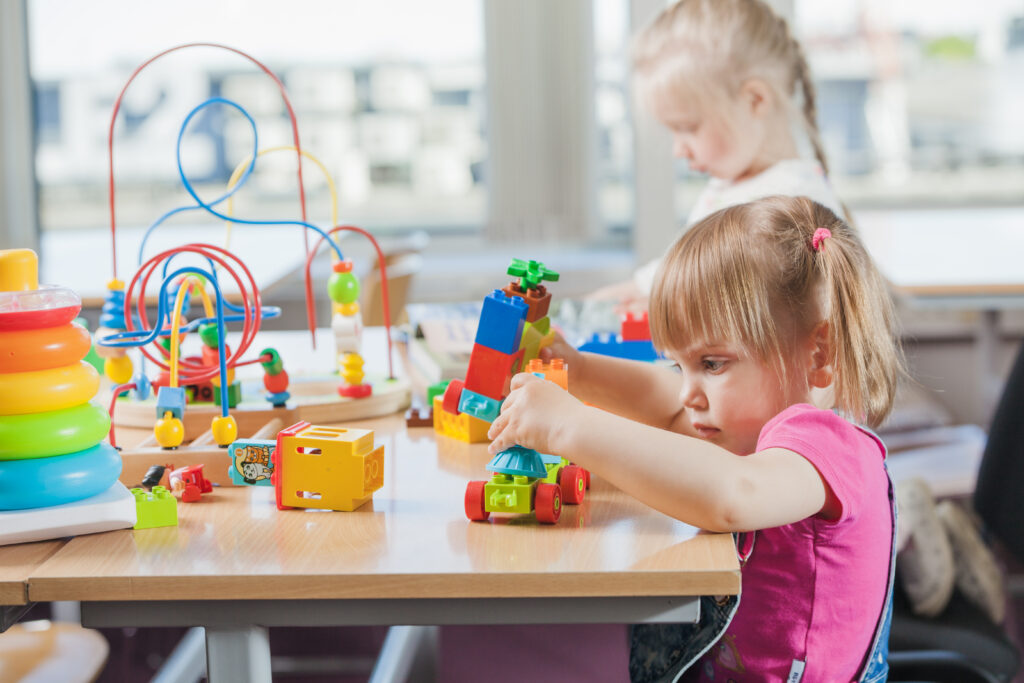Developmentally Appropriate Practice (DAP) is a teaching perspective in early childhood education where a teacher nurtures a child’s development (social, emotional, physical, and cognitive) based on the following:
- Theories of child development;
- What is individually important uncovered through assessment;
- The child’s cultural background (community, family history, and family structure).
The National Association for the Education of Young Children (NAEYC) adopted this approach in 1987. NAEYC outlines five key areas of early learning practices for effective teaching, which include: creating a caring community of learners, enhancing and supporting children’s development and learning through teaching young children, planning curriculum to achieve important goals, assessing children’s development and learning, and establishing reciprocal relationships with families. To learn more about the origin of early childhood education and the many influences that make the field what it is today, check out our post about the history of early childhood education.
“Developmentally Appropriate Practice is informed by what we know from theory and literature about how children develop and learn.” – NAEYC (National Association for the Education of Young Children)

Three core considerations of Developmentally Appropriate Practices
1. Knowledge of child development
Knowing typical development and learning at different ages provides you with a benchmark that will help prepare you to make decisions on the environment, interactions, activities, and materials. This knowledge should be based on research. You could try building a PILES child development chart using this guide.
2. Knowing what is individually appropriate for each child through assessment
Observing children at play, their interactions with their peers and environment helps you learn each child’s interests, skills, and developmental progress. These observations are crucial in refining how and what to teach each child as an individual. Having this knowledge allows you to know each child’s individual skills, needs, strengths, abilities, challenges, and interests. This enhanced learning environment fosters improved teaching practices that can lead to healthy development and help young children learn.
For tips specific to observation, download our free guide:

3. Knowing social and cultural contexts
Each child has their own cultural and family background. Having this knowledge ensures that each experience is respectful and meaningful for each child and family.
There are many basic principles of development that inform DAP, which include: the domains of development, observations/documentation, seeing each child as unique, and knowing the impact of early experiences, relationships and play has on the early years. Here are the basic principles of development:
- All the domains of development and learning are important, which include: physical, social, emotional and cognitive, which are interrelated to one another and influence what takes place in each of the domains
- Learning and development is observed and documented
- Each child is unique and develops at their own pace
- Early experiences are important for children’s development and learning
- Children develop best when they have secure and consistent relationships with adults and peers
- Social and cultural contexts influence development and learning
- Play promotes self-regulation, language, cognition and social competence
Incorporating DAP into Your Programming
- Focus on development for a specific age group to plan experiences and the environment
- Understand that each child is unique
- Allow time for teacher and child guided experiences in small and large groups
- Respect the social and cultural context of each individual child
- Support children’s play
Examples of Developmentally Appropriate Practice – Setting up Your Classroom
- Provide age-appropriate and culturally appropriate materials (ex. infant, toddler or preschool)
- Have materials and equipment at children’s height (ex. chairs, bookshelves, activity shelves)
- Spaces should accommodate movement of children
- Have play areas that provide manipulatives, puzzles, music and movement, books, dramatic play, blocks, physical materials for large muscles (ex. push toys) and sensory materials (ex. sand and water)
- Frequently change materials and equipment to reflect children’s interests and needs
Related Posts
- How To Build A PILES Child Development Chart
- Activities to Promote Preschool Cognitive Development
- Preschool Cognitive Development Overview & Techniques
- Integrating Physical Activities for Toddlers into Your Schedule
- Preschool Literacy Activities to Encourage Cognitive Development
- How to Build a Curriculum for Daycare

Run your Childcare Center like a superstar!
If you’re thinking of adding an app to your childcare center, we’d love to talk!
HiMama facilitates open communication with families and enables contactless operation of your center, from documentation to payments. We support tens of thousands of centers and can’t wait to help you too! Learn more about the app with a FREE tour.
Never miss another important moment to track each child’s development!




it very nice app for every one.